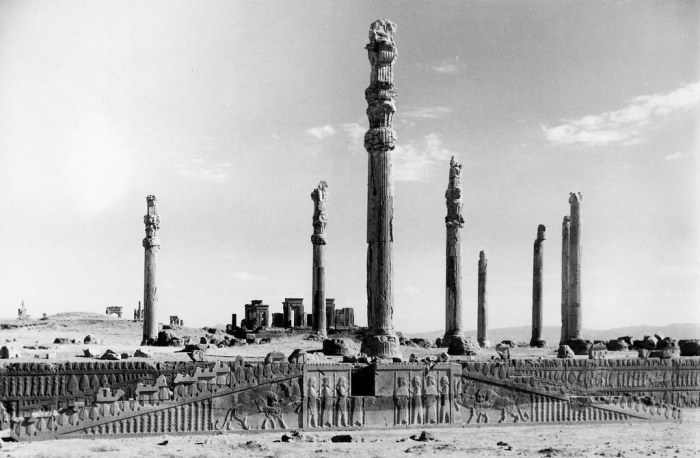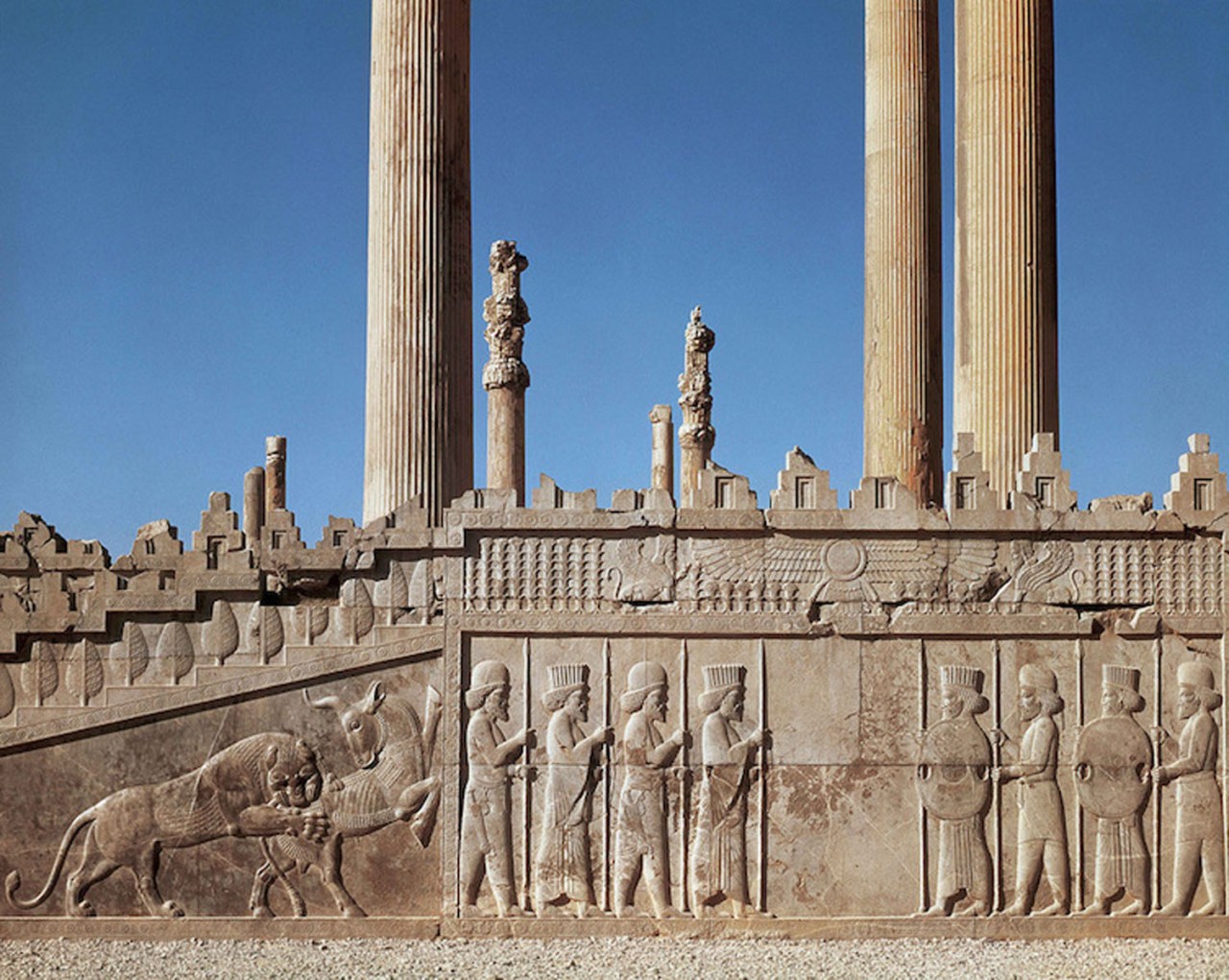Audience hall of darius and xerxes ap art history – As the Audience Hall of Darius and Xerxes takes center stage in this exploration, we embark on a journey through its architectural grandeur and historical significance. This extraordinary edifice stands as a testament to the ingenuity and artistic prowess of the ancient Persian Empire, inviting us to unravel its secrets and appreciate its enduring legacy.
Nestled within the ruins of Persepolis, the Audience Hall served as a grand reception chamber for foreign dignitaries and a symbol of the empire’s power and prestige. Its intricate design and elaborate reliefs offer a glimpse into the cultural and political life of ancient Persia, providing valuable insights into the empire’s grandeur and the reign of its illustrious rulers.
Architectural Design and Significance

The Audience Hall of Darius and Xerxes, located in the ancient Persian capital of Persepolis, is an architectural masterpiece that exemplifies the grandeur and opulence of the Persian Empire. Its unique design and symbolism reflect the political and cultural significance of the hall as a center of power and ceremony.
The hall is characterized by its vast scale and symmetrical layout. Its rectangular plan is defined by massive columns that support a wooden roof, creating a spacious and awe-inspiring interior. The walls are adorned with intricate relief sculptures depicting scenes from Persian history and mythology, serving as a visual narrative of the empire’s power and achievements.
The construction of the hall utilized a combination of materials, including mudbrick, stone, and wood. Mudbrick, a durable and economical material, was used for the main structure, while stone was employed for the foundations, doorways, and window frames. The wooden roof, supported by towering columns, provided insulation and shelter from the elements.
Relief Sculptures and Their Narratives

The Audience Hall is renowned for its exquisite relief sculptures, which adorn the walls and depict a wide range of historical events and mythological scenes. These reliefs provide a vivid account of the Persian Empire’s military campaigns, royal ceremonies, and religious rituals.
One of the most iconic reliefs portrays the procession of the Persian army, showcasing the diverse ethnic groups and military units that comprised the empire’s formidable force. Other reliefs depict the royal court, with the king receiving tribute from conquered nations and engaging in diplomatic exchanges.
The artistic techniques employed in the creation of these sculptures are highly sophisticated, demonstrating the skill and mastery of Persian artisans. The figures are carved with precision and detail, capturing the expressions and gestures of the subjects with remarkable accuracy.
The use of multiple layers of relief creates a sense of depth and perspective, enhancing the visual impact of the sculptures.
Throne Platform and Its Symbolism: Audience Hall Of Darius And Xerxes Ap Art History
The central feature of the Audience Hall is the elaborate throne platform, where the king and his court would receive foreign dignitaries and conduct official ceremonies.
The platform is raised above the main floor of the hall, emphasizing the king’s elevated status and authority. It is approached by a grand staircase flanked by colossal guardian figures, representing the protective power of the monarchy.
The throne itself is a masterpiece of craftsmanship, adorned with intricate carvings and inlaid with precious stones. Its placement at the far end of the hall reinforces the idea of the king as the central figure and the focal point of all attention.
Historical Context and Impact

The Audience Hall of Darius and Xerxes was built during the reigns of two of the most powerful Persian kings, Darius I (522-486 BCE) and Xerxes I (486-465 BCE). The hall served as a symbol of the empire’s wealth, power, and cultural achievements.
The hall played a crucial role in the political and diplomatic life of the Persian Empire. Foreign delegations would come from distant lands to pay homage to the king and negotiate treaties. The reliefs on the walls served as a reminder of the empire’s military prowess and the consequences of defying its authority.
The design and iconography of the Audience Hall had a profound impact on subsequent Persian and other cultures. Its architectural features, relief sculptures, and symbolic elements were imitated and adapted in various artistic and architectural traditions throughout the ancient world.
FAQs
What is the significance of the throne platform in the Audience Hall?
The throne platform, located at the far end of the hall, held immense symbolic importance. It represented the seat of power for the Persian king and was elevated to emphasize his authority and divinity.
What materials were used in the construction of the Audience Hall?
The Audience Hall was primarily constructed using mud bricks, which were then coated with a layer of plaster. The reliefs adorning the walls were carved from limestone, adding to the hall’s grandeur and durability.
What historical events are depicted in the relief sculptures?
The relief sculptures on the walls of the Audience Hall depict a variety of historical events, including military campaigns, royal ceremonies, and scenes from everyday life. These reliefs provide valuable insights into the history and culture of the Persian Empire.
